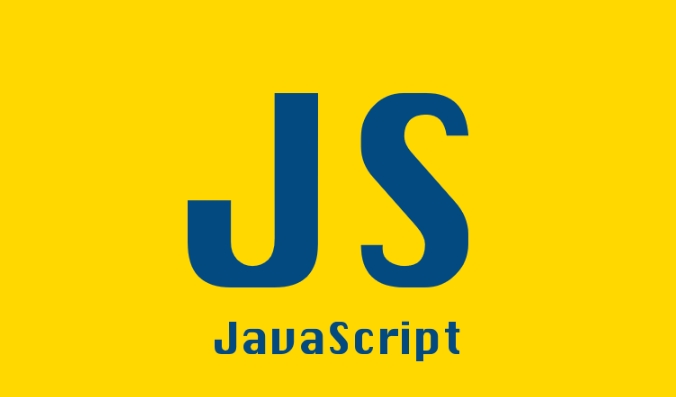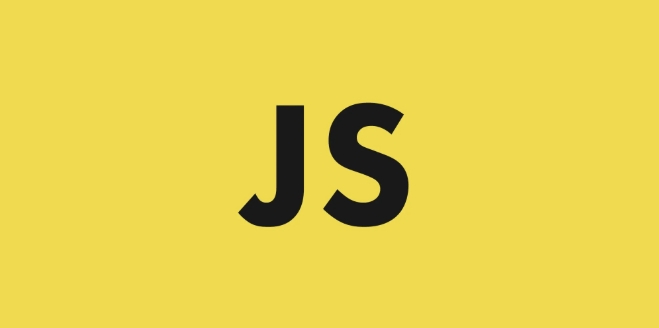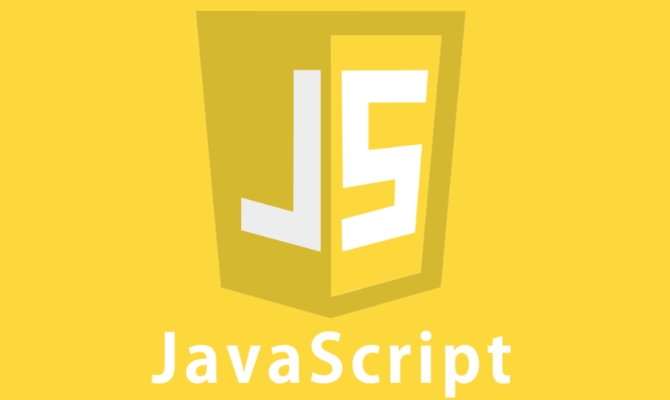Three.js: Creating 3D Graphics in the Browser
Jul 26, 2025 am 06:30 AMThree.js simplifies 3D graphics development in the browser, suitable for developers with a JavaScript foundation but no graphics background to get started quickly. 2. Its core advantage lies in encapsulating WebGL complexity, providing an easy-to-use abstraction layer, and supporting rich features such as lighting, materials, animations, and post-processing. 3. Each Three.js project is based on three components: scene, camera and renderer. It can create and render a rotating cube with a few lines of code. 4. Use MeshPhongMaterial or MeshStandardMaterial with DirectionalLight and other light sources to achieve real lighting effects. 5. The OrbitControl plug-in is introduced to enable mouse interaction to control viewing angle rotation. 6. Listen to the window resize event and update the camera scale and renderer size to ensure responsive display. 7. External models can be loaded through GLTFLoader, and it is recommended to use efficient and universal glTF format. 8. Learning suggestions include referring to official examples, paying attention to material updates and performance optimization, and paying attention to resource management to improve development efficiency and operation performance. Three.js is a powerful and easy-to-get-start 3D library for a wide range of scenarios from simple presentation to complex interactive applications.

Three.js makes it easy and intuitive to create 3D graphics in your browser. It is a WebGL-based JavaScript library that encapsulates the complexity of underlying graphics programming, allowing you to render stereoscopic scenes, lighting, animations and interactive effects in just a few lines of code. If you know how to write JavaScript, you can get started quickly even without a background in graphics.

1. Why choose Three.js?
WebGL is powerful, but using it directly requires handling a lot of underlying details: shader writing, buffer management, matrix transformation, etc. Three.js provides a clean abstraction on top of these, with major advantages including:
- Easy to get started : a rotating cube can be displayed in a few lines of code.
- Rich functions : supports geometry, materials, lighting, shadows, animations, post-processing, etc.
- Community active : a large number of tutorials, examples, and plugins (such as the control plugin
OrbitControls). - Cross-platform compatibility : works well in modern browsers, including mobile.
2. Basic structure: scene, camera, renderer
Every Three.js project cannot be separated from these three core components:

// 1. Create a scene (container)
const scene = new THREE.Scene();
// 2. Set the camera (view angle)
const camera = new THREE.PerspectiveCamera(75, window.innerWidth / window.innerHeight, 0.1, 1000);
camera.position.z = 5;
// 3. Create a renderer (canvas)
const renderer = new THREE.WebGLRenderer();
renderer.setSize(window.innerWidth, window.innerHeight);
document.body.appendChild(renderer.domElement);
// Add a cube const geometry = new THREE.BoxGeometry();
const material = new THREE.MeshBasicMaterial({ color: 0x00ff00 });
const cube = new THREE.Mesh(geometry, material);
scene.add(cube);
// Animation loop function animate() {
requestAnimationFrame(animate);
cube.rotation.x = 0.01;
cube.rotation.y = 0.01;
renderer.render(scene, camera);
}
animate();This code creates a green cube and keeps it spinning continuously.
3. Common components and techniques
Add lighting and materials
MeshBasicMaterial is not affected by light. To make the lighting work, use MeshPhongMaterial or MeshStandardMaterial and add the light source:

const light = new THREE.DirectionalLight(0xffffff, 1); light.position.set(1, 1, 1).normalize(); scene.add(light);
Let users interact: OrbitControls
It is very practical to drag and rotate the viewing angle through the mouse:
import { OrbitControls } from 'three/examples/jsm/controls/OrbitControls.js';
const controls = new OrbitControls(camera, renderer.domElement);Respond to window changes
When the browser window is zoomed, adjust the canvas size and camera scale:
window.addEventListener('resize', () => {
camera.aspect = window.innerWidth / window.innerHeight;
camera.updateProjectionMatrix();
renderer.setSize(window.innerWidth, window.innerHeight);
});4. Loading 3D models
Three.js supports loading external models (such as glTF, OBJ, FBX):
import { GLTFLoader } from 'three/examples/jsm/loaders/GLTFLoader.js';
const loader = new GLTFLoader();
loader.load('model.gltf', (gltf) => {
scene.add(gltf.scene);
});It is recommended to use glTF format, which is the "JPEG" of 3D content and is widely supported.
Basically that's it. Three.js has a smooth learning curve, suitable for the development of from simple graphics to complex interactive 3D applications. Not complicated, but it is easy to ignore details, such as material updates, performance optimization and resource management. See more official examples ( http://ipnx.cn/link/7aaba5f3511f56128e7130c2973e0503 .
The above is the detailed content of Three.js: Creating 3D Graphics in the Browser. For more information, please follow other related articles on the PHP Chinese website!

Hot AI Tools

Undress AI Tool
Undress images for free

Undresser.AI Undress
AI-powered app for creating realistic nude photos

AI Clothes Remover
Online AI tool for removing clothes from photos.

Clothoff.io
AI clothes remover

Video Face Swap
Swap faces in any video effortlessly with our completely free AI face swap tool!

Hot Article

Hot Tools

Notepad++7.3.1
Easy-to-use and free code editor

SublimeText3 Chinese version
Chinese version, very easy to use

Zend Studio 13.0.1
Powerful PHP integrated development environment

Dreamweaver CS6
Visual web development tools

SublimeText3 Mac version
God-level code editing software (SublimeText3)
 How to make an HTTP request in Node.js?
Jul 13, 2025 am 02:18 AM
How to make an HTTP request in Node.js?
Jul 13, 2025 am 02:18 AM
There are three common ways to initiate HTTP requests in Node.js: use built-in modules, axios, and node-fetch. 1. Use the built-in http/https module without dependencies, which is suitable for basic scenarios, but requires manual processing of data stitching and error monitoring, such as using https.get() to obtain data or send POST requests through .write(); 2.axios is a third-party library based on Promise. It has concise syntax and powerful functions, supports async/await, automatic JSON conversion, interceptor, etc. It is recommended to simplify asynchronous request operations; 3.node-fetch provides a style similar to browser fetch, based on Promise and simple syntax
 JavaScript Data Types: Primitive vs Reference
Jul 13, 2025 am 02:43 AM
JavaScript Data Types: Primitive vs Reference
Jul 13, 2025 am 02:43 AM
JavaScript data types are divided into primitive types and reference types. Primitive types include string, number, boolean, null, undefined, and symbol. The values are immutable and copies are copied when assigning values, so they do not affect each other; reference types such as objects, arrays and functions store memory addresses, and variables pointing to the same object will affect each other. Typeof and instanceof can be used to determine types, but pay attention to the historical issues of typeofnull. Understanding these two types of differences can help write more stable and reliable code.
 React vs Angular vs Vue: which js framework is best?
Jul 05, 2025 am 02:24 AM
React vs Angular vs Vue: which js framework is best?
Jul 05, 2025 am 02:24 AM
Which JavaScript framework is the best choice? The answer is to choose the most suitable one according to your needs. 1.React is flexible and free, suitable for medium and large projects that require high customization and team architecture capabilities; 2. Angular provides complete solutions, suitable for enterprise-level applications and long-term maintenance; 3. Vue is easy to use, suitable for small and medium-sized projects or rapid development. In addition, whether there is an existing technology stack, team size, project life cycle and whether SSR is needed are also important factors in choosing a framework. In short, there is no absolutely the best framework, the best choice is the one that suits your needs.
 JavaScript time object, someone builds an eactexe, faster website on Google Chrome, etc.
Jul 08, 2025 pm 02:27 PM
JavaScript time object, someone builds an eactexe, faster website on Google Chrome, etc.
Jul 08, 2025 pm 02:27 PM
Hello, JavaScript developers! Welcome to this week's JavaScript news! This week we will focus on: Oracle's trademark dispute with Deno, new JavaScript time objects are supported by browsers, Google Chrome updates, and some powerful developer tools. Let's get started! Oracle's trademark dispute with Deno Oracle's attempt to register a "JavaScript" trademark has caused controversy. Ryan Dahl, the creator of Node.js and Deno, has filed a petition to cancel the trademark, and he believes that JavaScript is an open standard and should not be used by Oracle
 Handling Promises: Chaining, Error Handling, and Promise Combinators in JavaScript
Jul 08, 2025 am 02:40 AM
Handling Promises: Chaining, Error Handling, and Promise Combinators in JavaScript
Jul 08, 2025 am 02:40 AM
Promise is the core mechanism for handling asynchronous operations in JavaScript. Understanding chain calls, error handling and combiners is the key to mastering their applications. 1. The chain call returns a new Promise through .then() to realize asynchronous process concatenation. Each .then() receives the previous result and can return a value or a Promise; 2. Error handling should use .catch() to catch exceptions to avoid silent failures, and can return the default value in catch to continue the process; 3. Combinators such as Promise.all() (successfully successful only after all success), Promise.race() (the first completion is returned) and Promise.allSettled() (waiting for all completions)
 What is the cache API and how is it used with Service Workers?
Jul 08, 2025 am 02:43 AM
What is the cache API and how is it used with Service Workers?
Jul 08, 2025 am 02:43 AM
CacheAPI is a tool provided by the browser to cache network requests, which is often used in conjunction with ServiceWorker to improve website performance and offline experience. 1. It allows developers to manually store resources such as scripts, style sheets, pictures, etc.; 2. It can match cache responses according to requests; 3. It supports deleting specific caches or clearing the entire cache; 4. It can implement cache priority or network priority strategies through ServiceWorker listening to fetch events; 5. It is often used for offline support, speed up repeated access speed, preloading key resources and background update content; 6. When using it, you need to pay attention to cache version control, storage restrictions and the difference from HTTP caching mechanism.
 Leveraging Array.prototype Methods for Data Manipulation in JavaScript
Jul 06, 2025 am 02:36 AM
Leveraging Array.prototype Methods for Data Manipulation in JavaScript
Jul 06, 2025 am 02:36 AM
JavaScript array built-in methods such as .map(), .filter() and .reduce() can simplify data processing; 1) .map() is used to convert elements one to one to generate new arrays; 2) .filter() is used to filter elements by condition; 3) .reduce() is used to aggregate data as a single value; misuse should be avoided when used, resulting in side effects or performance problems.
 JS roundup: a deep dive into the JavaScript event loop
Jul 08, 2025 am 02:24 AM
JS roundup: a deep dive into the JavaScript event loop
Jul 08, 2025 am 02:24 AM
JavaScript's event loop manages asynchronous operations by coordinating call stacks, WebAPIs, and task queues. 1. The call stack executes synchronous code, and when encountering asynchronous tasks, it is handed over to WebAPI for processing; 2. After the WebAPI completes the task in the background, it puts the callback into the corresponding queue (macro task or micro task); 3. The event loop checks whether the call stack is empty. If it is empty, the callback is taken out from the queue and pushed into the call stack for execution; 4. Micro tasks (such as Promise.then) take precedence over macro tasks (such as setTimeout); 5. Understanding the event loop helps to avoid blocking the main thread and optimize the code execution order.






